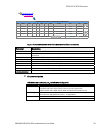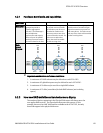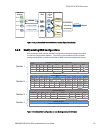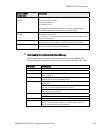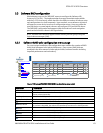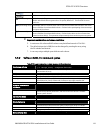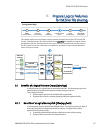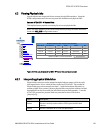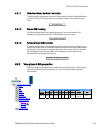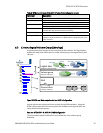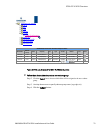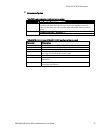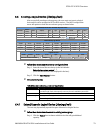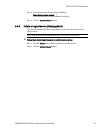
RTM-ATCA-SXXX Overview
6806800H62B ATCA‐S201InstallationandUseGuide67
6 Prepare Logical Volumes
for iSCSI or file sharing
1
RS232
Console Setup
2
Ethernet
Comm. Setup
3
RAID
LUN Setup
4
Logical Volume
Setup
5
iSCSI
Device Setup
6
NFS / SMB
Share Setup
Configuration Step:
This chapter explains how to prepare a device resource (example /dev/sda) for iSCSI or NAS file
sharing. Disks appearing in the “physical disk” menu
must first be mapped to a Logical Volume
group before it can be used for these services. Once a device is committed as a shared resource
for iSCSI or NAS for service, it becomes un-available for new RAID or logical volume definitions
unless it is first un-shared.
iSCSI & NAS
AMC disk
modules
HW RAID
Physical
disks
sda
sdb
sdc
Zone-2 Fabric
Zone-2 Base
Zone-3 RTM
IP network
IP host
1:1 mapping (JBOD)
1:1 mapping (JBOD)
Site: B1
Site: B2
Site: B3
Site: B4
Logical
groups
&
volumes
vgz
vga
CIFS
share points
NFS
share points
iSCSI
LUNs
4
6.1 Benefits of a logical Volume Group (/dev/vga)
A volume group is a group of one or more physical disks. A volume group gives the
administrator several powerful tools to manage storage resources.
These features include:
Define volume groups with multiple disks or partitions
Dynamically increase a volume group by adding new physical disks
6.1.1 Benefits of a Logical device/disk (/dev/vga/lva0)
A volume group may be divided into multiple pieces. Each piece is known as logical
device but may also be called a logical disk or volume. A Logical Device offers
powerful features that include:
Essentially unlimited logical devices defined on each volume group
Dynamically increase the size of logical device



